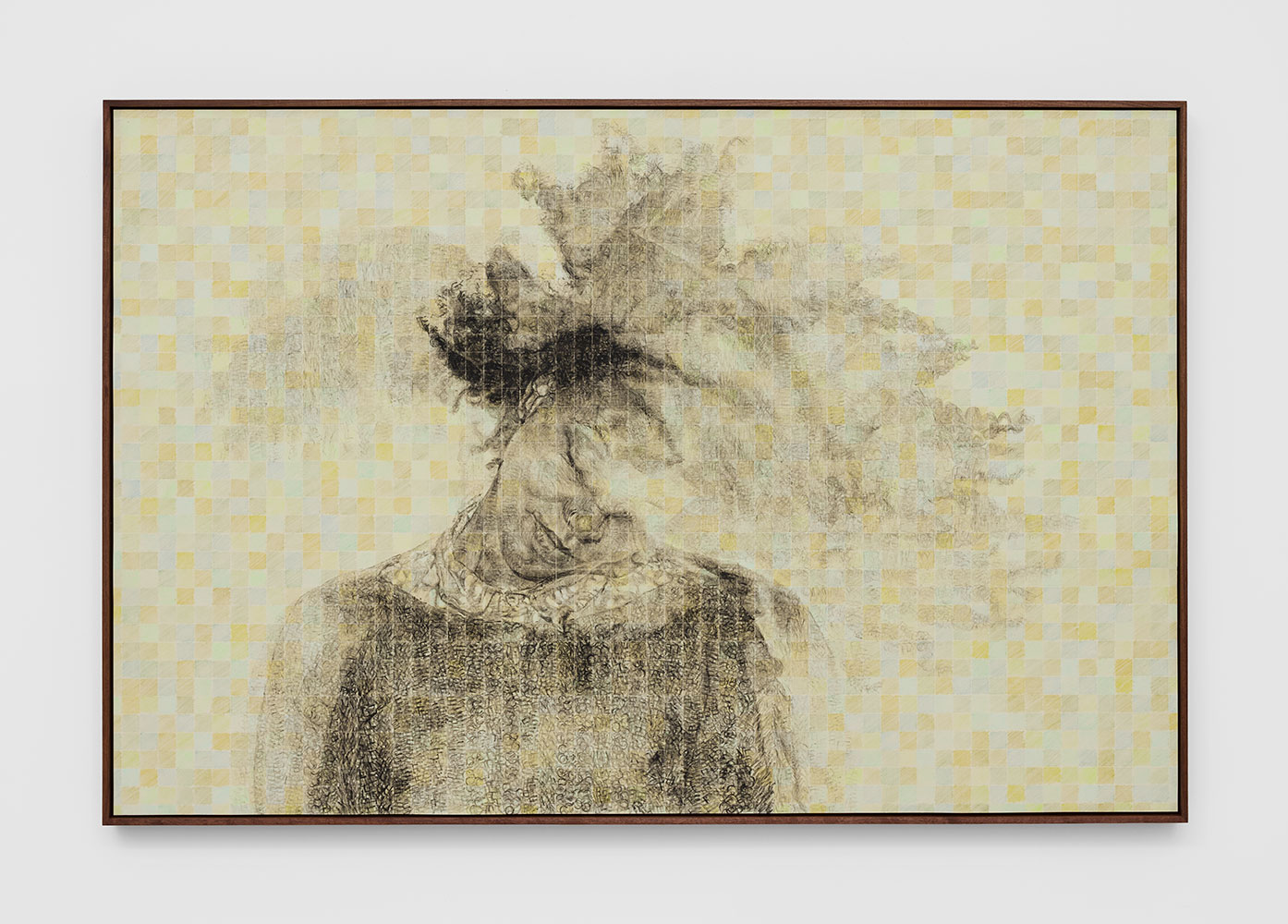Kenturah Davis is best known for her large-scale, figurative text drawings made through a variety of labor-intensive techniques, including stamped embossing, rubbed etchings, and ink washes. Her portraits depict friends, family, and those in her social circle, and they utilize text, light, and color to examine the relationship between language and memory.
Davis approaches her practice with a singular attention to the drawn line and its capacity to translate language. She uses photographic references for her subjects, composing her drawings by layering inked letters to build density across her handmade paper. The Bodily Effect of a Color (Tanea) stems from a series of portraits the artist began during her fellowship at NXTHVN, a body of work that has become representative of Davis’s unique approach to illustration and representative portraiture. Each drawing depicts an acquaintance—in this case, the artist’s friend Tanea, photographed with her hair thrown back—and each likeness is made by carefully layering rubber stamped letters in oil paint pressed onto handmade Japanese paper. Davis scores her paper with a one-inch grid that she color codes and assigns different letters, which here repeat the phrase “the bodily effect of a color” in each row, creating a portrait entirely through text. The effect of this layering, a shallow relief, mesmerizes and blurs visualization of the subject, who appears in arrested motion between words and moments of time. This intentional visual confusion underscores the artist’s main concern: how language is mediated through vision, memory, and the body, and “the fundamental role that language has in shaping how we understand ourselves and the world around us.”
